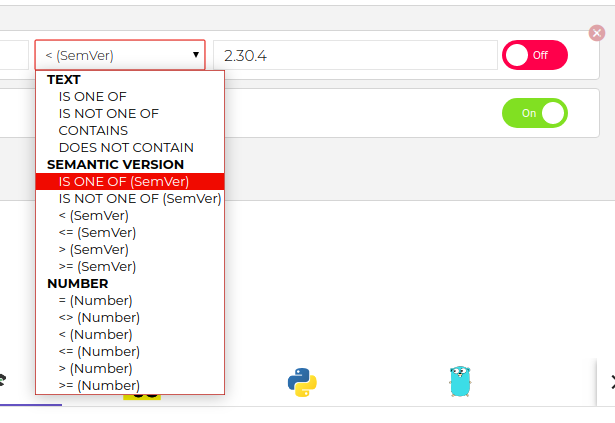Introducing sensitive text comparators
Focusing on frontend applications, we introduced sensitive text comparators to make sure sensitive info (like email address, username) is kept hidden in targeting rules.

Focusing on frontend applications, we introduced sensitive text comparators to make sure sensitive info (like email address, username) is kept hidden in targeting rules.

Inspired by Treelon Musk we decided to do our part in the fight against deforestation and climate change. In Nov 2019 we partnered with a non-profit organization MyForest to support local forests by planting trees after every purchase of the ConfigCat service and whenever someone gives feedback.

There is a way to stream feature flag and configuration changes to the clients right when they happen. In some cases ConfigCat's pull based architecture does not completely satisfies the requirements when microservices need the latest values instantly, or mobile apps where polling sometimes is a battery consuming anti-pattern.
Your application subscribes to a PubNub channel to get updates about changes. And use ConfigCat Webhooks to notify PubNub when a feature flag value gets updated.
Sample application in Node.js.
Satisfying the feature request of our customers from the mobile app development industry, ConfigCat now supports semantic version (SemVer) based user targeting.
Typical use case where app builders wish to enable or disable features based on the iOS or Android version on the device their app is running on.
For example deciding if 2.3.40 is less than or equals 2.30.4 sometimes not that straightforward by only using the traditional < > = comparators.

Show us your most innovative idea in using feature flags with ConfigCat, and we’ll send you a pack of gifts including your choice of video or music streaming worth $100, or books worth $150 + a pack of ConfigCat and GitHub swag + a commercial ConfigCat subscription.
2FA is a way of granting access to users only after presenting two separate pieces of evidence (factors). One of these factors is usually a password which the user should know and the other factor something they have or even something they are. This way you can be sure that only knowing your password won't be enough for an attacker to gain access to your account.
In our case the first factor is password you use to login to ConfigCat Dashboard. The second factor is a 6-digit number generated via an Authenticator App.
Students should have access to the highest-quality education available. So we partnered with @GitHubEducation and joined the GitHub Student Developer Pack.

Our architecture, stacks and why did we choose them. A recipe for SaaS startups for an affordable, scalable and high-performing system that scales well.
ConfigCat on StackShare
We are very excited about the release of our new shiny Landing Page on configcat.com.

Use Feature Flags, and you do not need to worry about the ambiguous Apple App Store review. Also, you can forget about the release trains or the good old days when PMs are running around in the office with flame-throwers.
